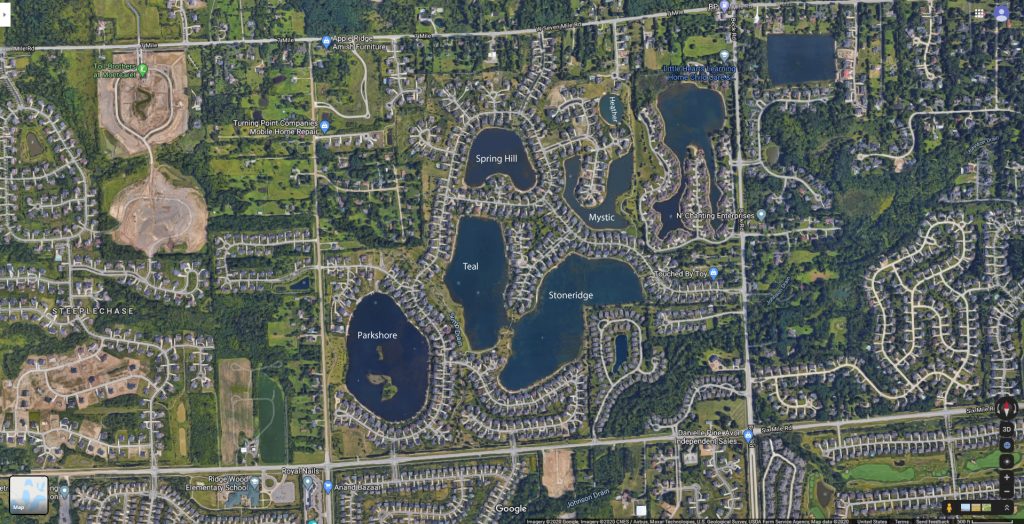THE LAKES
Stonewater’s six private lakes provide year-round recreation, such as: boating, swimming, fishing, and ice skating. They include Parkshore (28 acres), Stoneridge (25 acres), Teal (23 acres), Spring Hill (20 acres), Mystic (9 acres) and Heather (2 acres). Parkshore is unique, with two private islands to explore. Stoneridge and Teal Lakes are connected by a strait between two peninsulas.
- The principal water sources for the lakes are subsurface groundwater (water table) and precipitation.
- A Common Area beach is located in Shorebrook Park south of the gazebo. No pets are allowed in beach area. Swim at your own risk. No lifeguard on duty. Children must be
accompanied by an adult. - Residents and their guests may fish by “catch and release” only. On private lakes, homeowners are not required to have a fishing license.
- No fishing or swimming near the lake fountains.
- Boating season is from May 1 – October 31 of each year. Contact the management company for access to the boat ramps.
- Gasoline powered engines are prohibited.
- Electric motors of 3 HP or less are allowed on Parkshore, Teal, and Stoneridge Lakes.
- Spring Hill, Heather and Mystic Lakes are limited to non-motorized watercraft, such as paddle boats and kayaks.
PROTECT OUR LAKES
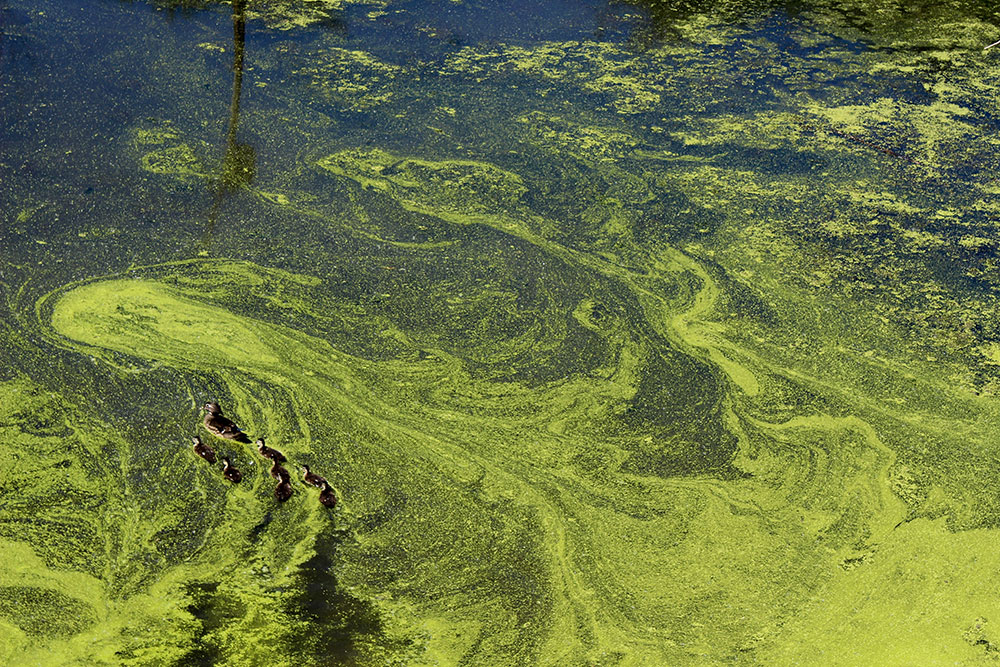
Lake management starts with responsible homeowner activities throughout our community. Be conscious of what chemicals and organic materials you use outside, and contain them so they do not migrate to our lakes through stormwater runoff and our street storm drains which feed directly into the lakes.
- Do not fertilize your lawn with Phosphorus. Phosphorus promotes growth of lawns but doesn’t make it greener. Fertilizer run-offs (when it rains or as you water your lawns) into our street storm drains, which discharge directly into our lakes. Of the 3 numbers on a bag of fertilizer the middle number is the amount of phosphorus. The middle number must read “0”. One pound of Phosphates grows 10,000 lbs. of weeds & algae!
- Do not allow grass clippings in the lake. They carry fertilizer with them and also decay. Make sure lawn services are notified of this as well.
- Rake your beachfront periodically, especially in the spring and fall to remove decaying organic materials, including leaves and branches. Raking your waterfront also discourages the buildup of muck.
- To prevent the spread of invasive species, wash your boat or watercraft after visiting other lakes. If you take your boat onto other bodies of water, be sure you wash it off and dry it before putting into our lakes.
- Use biodegradable soap for washing anything outdoors.
- Limit use of chlorides (deicing salts), even in small amounts, they can harm our lakes ecosystems and feed toxic algae. Calcium magnesium acetate is a better alternative.
WATER QUALITY AND LAKE MANAGEMENT
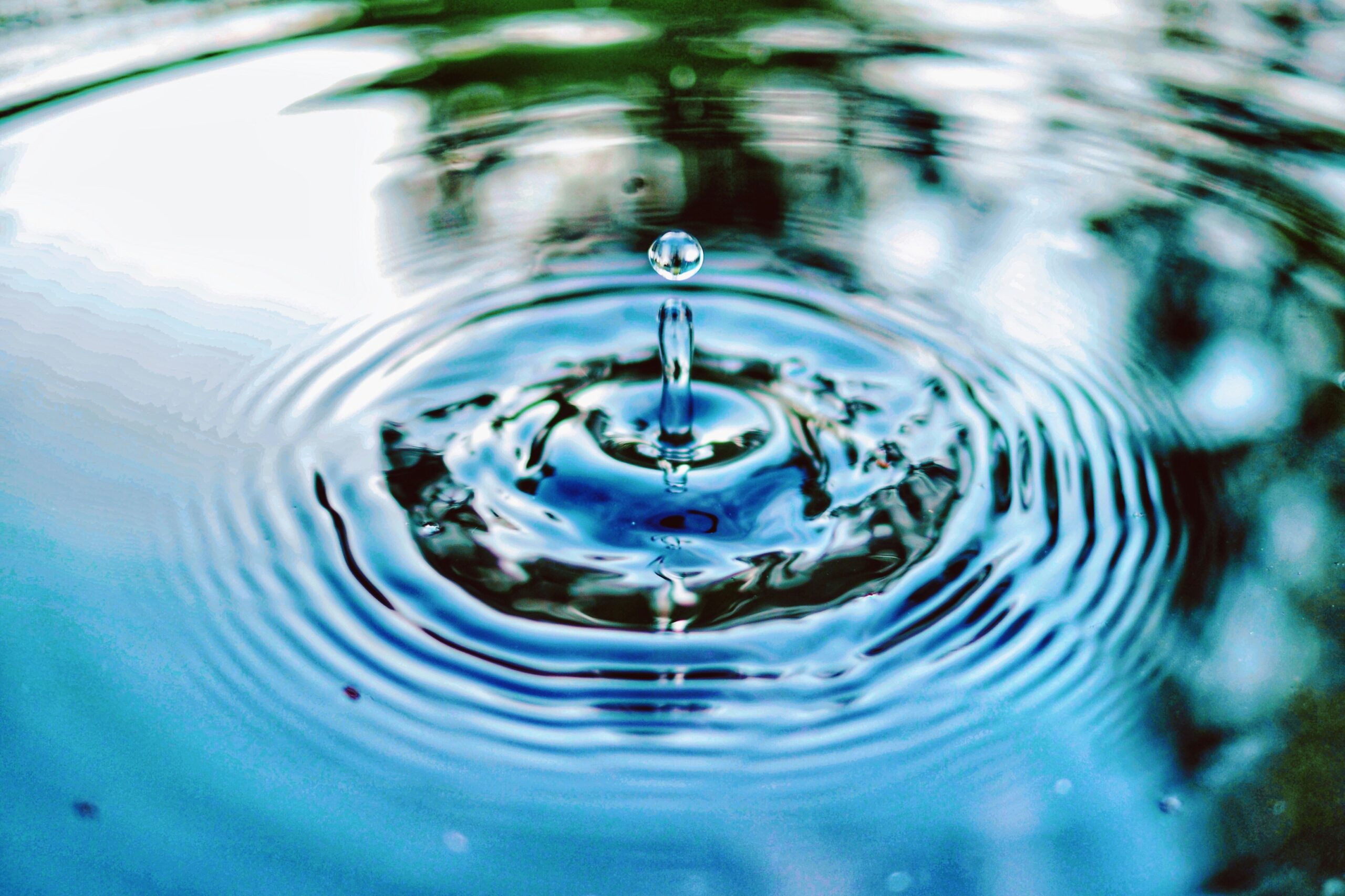
The Associations’ Lake Management Plan is prepared by a licensed contractor and is updated on an annual basis. The plan is based on the results of water quality testing and aquatic vegetation assessments (both native and invasive aquatic plant species). The annual evaluation of the conditions in each lake is used to direct future management treatments. The most current Lake Management Plan is available for your review here.
Notification of Lake Treatments: At the beginning of the season all residents are notified of the first lake treatment at least seven days in advance, but no more than forty-five days prior. A tentative Lake Treatment Schedule for the season is also posted on this website. In addition, a notice is posted on the day of treatment along the Common Area shoreline, and the shoreline of every resident within 100 feet of the treatment areas.
The lakes are treated at least once a month during the summer, or more, if necessary. The treatment schedule may be adjusted due to weather and residents should always observe whether there is a treatment notice on the shoreline, prior to swimming in the lake.
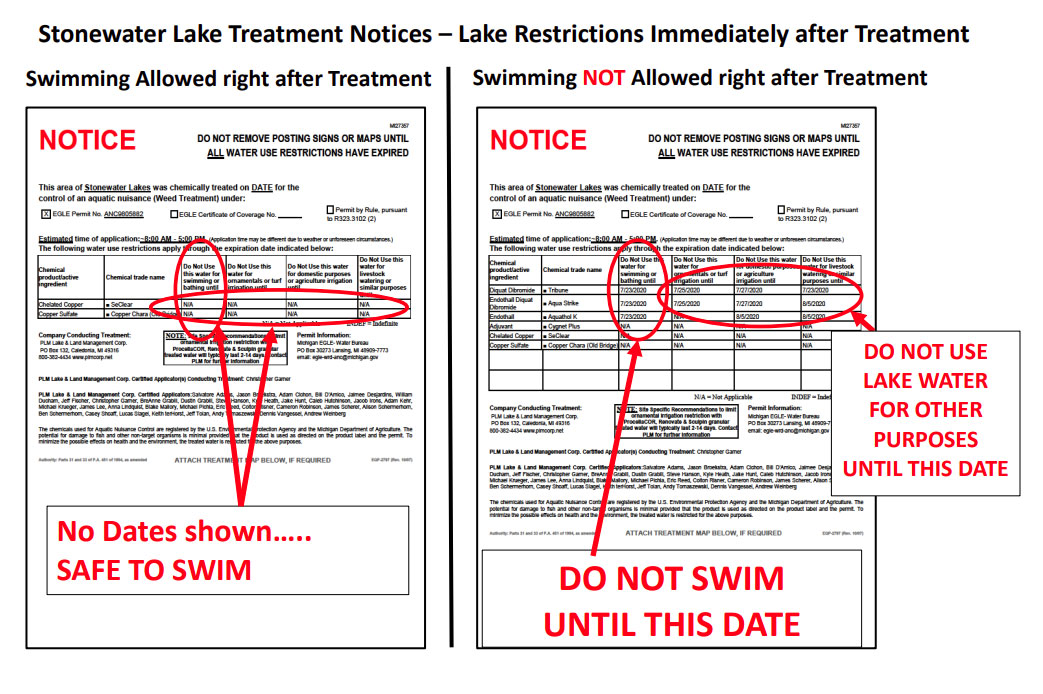
LAKE FRONT OWNERS
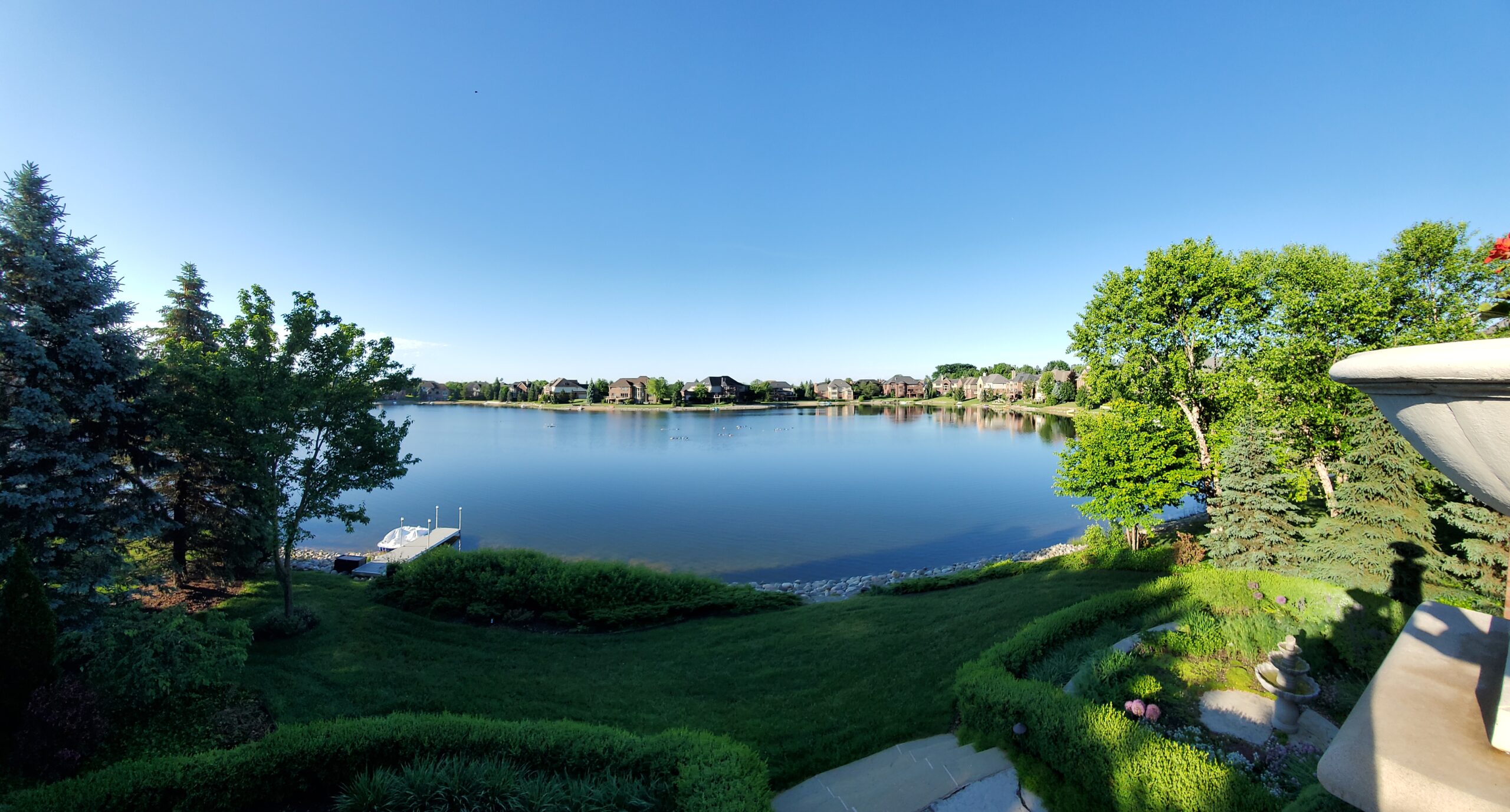
Shoreline landscaping and hardscaping, including the dock, require ACC approval and modification requests must be preapproved. Shorelines must be well-maintained to the water’s edge; keep in mind lake levels and the water’s edge along the shoreline change throughout the summer.
Managing your shoreline:
- Maintain the shoreline beach area by raking sand back in place on the shore above the highwater line and retrieving any slipped cobblestones from the lake. Remove shoreline weeds often by hand, rake or torch. Use of Roundup, or similar chemicals, is prohibited.
- Do not bring in more sand than is needed. This sand gets washed into the lake, making it shallower and reducing water quality.
- A Michigan Department of Environment, Great Lakes, and Energy (EGLE) permit is required to add sand to any beach below the highwater line. Extending your shoreline is strictly prohibited.
- To remove aquatic plants from shoreline bottom, use a light aluminum 30 lake rake and pile plants on your dock or grass to dry; then put in yard waste container. Regular raking of the shoreline reduces muck and algae growth.
- To remove filament algae, use a skimmer net.
If you want a clean “beach” landscape design, raking is important. The best way to keep your shoreline lake bottom muck free is to use it. It has been said that a group regularly playing water volleyball is better than any chemical treatment. Raking introduces oxygen and the microbes will dissolve the muck. For more information, see attached regarding a Beach Bottom Cleaning Tool.
If you prefer a more natural shoreline, and less maintenance, skip the sand and opt for all cobblestone. For more information: 2024 Stonewater Shoreline Requirements
STONEWATER CREEK
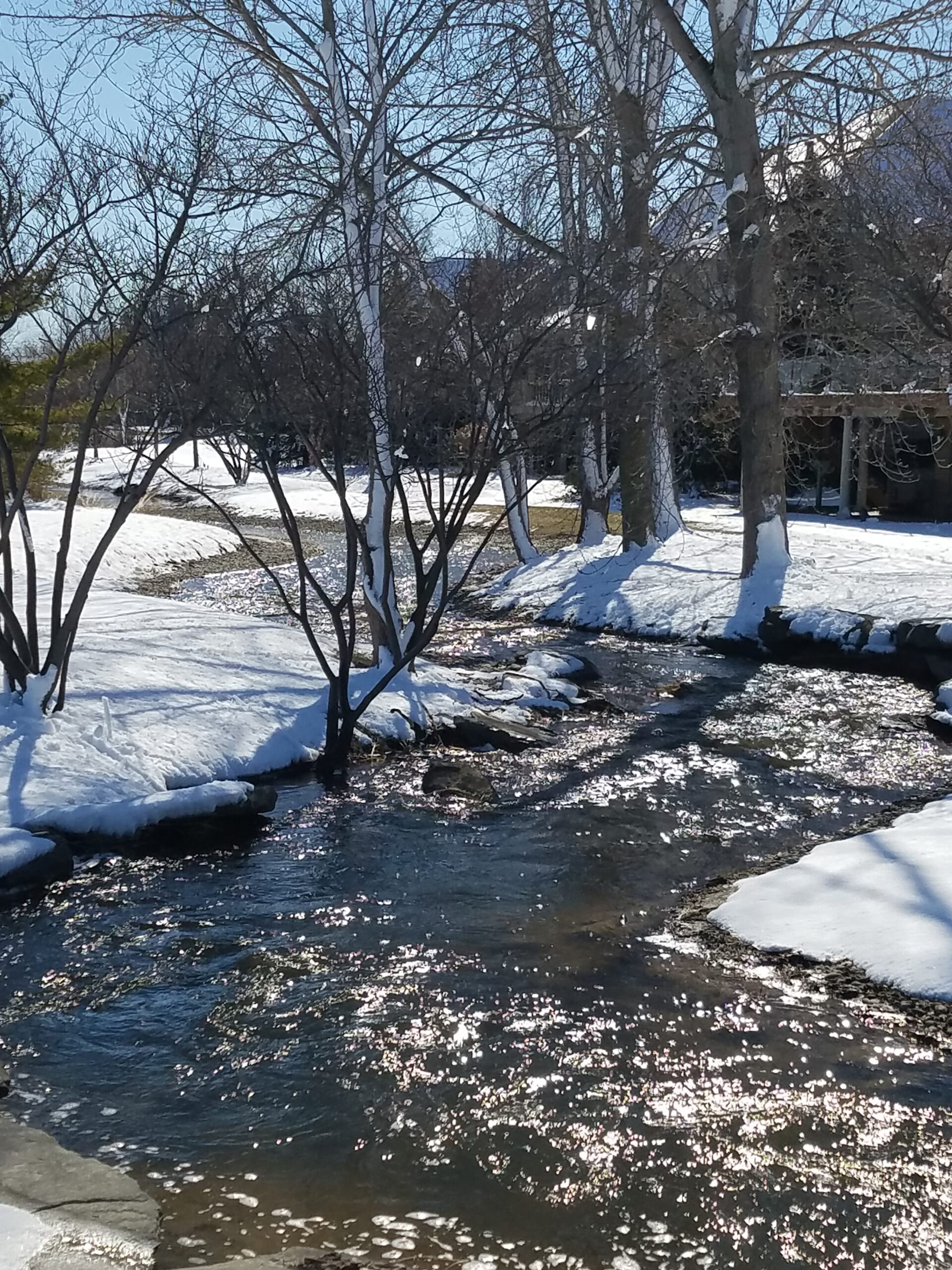
Stonewater Creek was faithfully restored to enable the native fish to reestablish their natural habitat. The creek flows independently through the community for roughly one mile. Please be aware, fishing in the creek (public waterway) requires a fishing license.
For flood control events, such as a 100-year storm event or greater intensity, excess creek water will be diverted as it enters our community into the north end of Parkshore Lake.
UNDERGROUND DRAINAGE SYSTEM (FLOOD CONTROL)
Our drainage system is designed to provide approximately 3′ of storage capacity in the lakes for a storm event (100-year storm event). The 100-year design flood plain for the upper lakes is 828’, and 825’ for the lower lakes. As an additional safeguard, the site grading plan for each lake front lot is designed to maintain your walkout basement level elevation an additional two feet above the 100-year design flood plain.
- The upper lakes, Parkshore, Teal, Stoneridge and Spring Hill, are interconnected through a network of submerged lake equalization culverts, and the open channel at Peninsula Park between Stoneridge and Teal Lakes. A lake water outlet to the Johnson Drain located on the northeast end of Stoneridge Lake helps to maintain the upper lakes highwater surface elevation below 825.0.
- The lower lakes, Mystic Lake and Heather Lake, are also interconnected by a submerged pipe. The lower lakes have a lake water outlet to the Johnson Drain in the southeast corner of Mystic Lake to help maintain the lower lakes highwater surface elevation below 823’.
- Gravity fed water flow, through a submerged pipe between Spring Hill Lake and Mystic Lake, connects the upper lakes to the lower lakes and can be closed if necessary.
- The source of water for all Stonewater’s lakes is primarily groundwater (water table), and some local precipitation runoff from lake front lots and storm water collected from our streets. The lake levels fluctuate on a seasonal and cyclical basis, and is solely determined by the amount of precipitation that falls on our watershed (3,000 acres).
For more information about your property, see Water-near-your-Stonewater-Home-in-100-Year-Flood-RevC3.pdf
